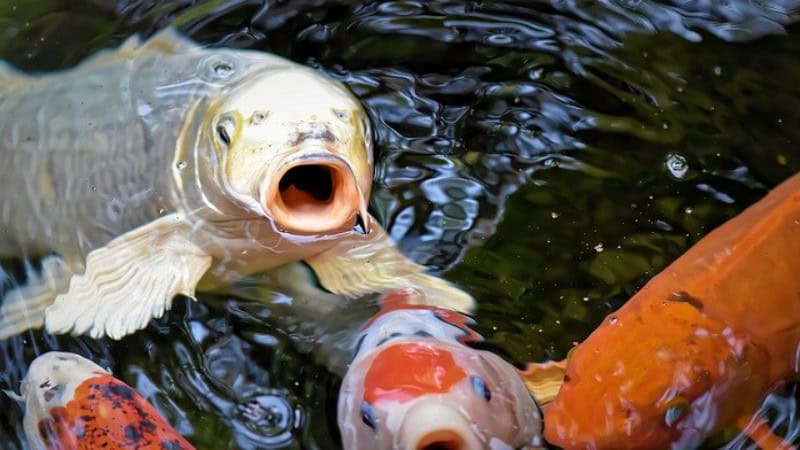A koi pond is a great amenity to add to your backyard, but of course, you will have to take care of it by the day in order to keep it healthy. Koi are small, orange and white fish that make for simple outdoor pets that can liven up your pond space, but with the addition of fish to your outdoor pond, you’ll need to take even more measures in order to keep them from dying unexpectedly.
Here are four tips to taking care of a school of koi in your pond.
Provide the Right Equipment
If you are thinking about building a pond, you should be looking for pond fountains and pumps. A fountain or aerator will add oxygen from air to your pond, and a pump will filter out stale water and allow clean water to circulate through. Your koi will need these devices to keep receiving clean water and oxygen, and it will also keep your pond looking clear and beautiful. It is also necessary to get equipment for the right sized pond you are building. As these devices are working, be sure they are still running optimally so that clean air and water cycles through.
Don’t Clutter Your Pond
Try not to overcrowd your pond with fish. With too many fish, there won’t be enough resources or space to sustain them all. Fish need plenty of water, oxygen, and room to move around for a healthy living environment. Be careful of how many plants you add to your pond, too. Too many plants that cover the surface will prevent enough oxygen and sunlight from making its way to your koi. Too many plants will also limit what the fish can see underwater.
Don’t Overfeed Your Koi
Once a day is all you need to feed koi. Give them food more than once a day and that food will go un-eaten and spoil inside the pond. This uneaten food will grow bacteria, which can be a detriment to your koi. It can also potentially make the water murkier, thus it will look unhealthy and dirty. Spoiled food in the pond will certainly make your fish ill, and your pond will also start to smell bad as a result.
Check Your Water’s Temperature
A temperature gauge will allow you to see how hot or cold your pond’s water is. During the summer, your pond will lose oxygen as the temperature rises. Try not to allow your pond to get warmer than 75 degrees Fahrenheit. A pond fountain or aerator can help keep the water cooler by adding more oxygen that comes from the cooler air above the pond’s surface. You can also add plants such as water lilies to give the pond more shade, but as mentioned earlier, do not give your pond too many plants.
In the winter, you don’t want your pond to get too cold, either. Ice can build up in the water with can also limit how much oxygen your koi and plants will receive. Fortunately, you can purchase a pond heater or other device called a de-icer to prevent the development of ice inside your pond water. Keep temperatures as a tolerable level, however, to prevent your pond form getting too warm like a hot tub.


